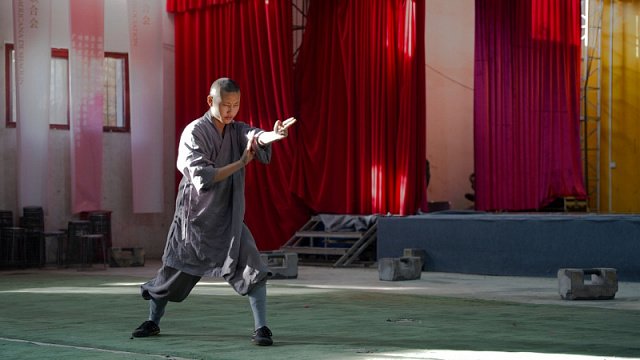29.05.25
19:00
Shaolin Wushu: tool of China’s cultural diplomacy
This article explores the history and philosophy of Shaolin Wushu, as well as its role in intercultural exchange
Shaolin Wushu, also known as Shaolin Kung Fu, is a unique phenomenon that combines martial arts, philosophy, and cultural tradition. According to the
People’s Daily Online, a partner of TV BRICS, it historically developed within the distinct Buddhist environment of the Shaolin Monastery, located on Mount Songshan in Henan Province, and became part of the monks’ spiritual and physical training.
The origins of Shaolin Wushu are linked to the monk Bodhidharma, who arrived in China from India in the 6th century. He developed a system of exercises to strengthen the body and mind, which formed the basis of what would become a martial art. Thus, it was within the walls of the Shaolin Monastery that a practice was born combining physical training, meditative exercises, and the philosophy of Chan Buddhism.

Anastasiya Simonova, a member of the Expert Council for Culture of the Youth Parliament under the State Duma of the Russian Federation, noted in a comment to TV BRICS that Shaolin is often referred to today as the heart of Chinese martial arts – and with good reason. At the same time, China’s martial tradition is rich and diverse: for example, the style of Tai Chi Chuan differs significantly from the dynamic and attacking techniques of Shaolin Wushu, she added. It is based on smoothness, softness, and inner focus.
However, Shaolin Wushu is more than just a method of self-defence – it is a comprehensive system of self-discipline in which physical strength is subordinated to inner control and moral principles. It encompasses hand-to-hand combat, weapons training, physical conditioning of Shaolin monks, practices for developing inner strength, energy cultivation and physical restoration, as well as meditation to harmonise the mind.
According to Simonova, the uniqueness of Shaolin Kung Fu compared to other Eastern martial arts lies in its greater emphasis on the spiritual rather than the sporting component. Wushu has also become an important element of cultural diplomacy.
“Today, Shaolin Wushu serves as a significant symbol of China’s spiritual culture abroad. Through it, modern China conveys its traditional philosophical and moral-spiritual values to the international community, thereby strengthening cultural ties and attracting like-minded individuals”
Anastasiya Simonova Expert on China
Today, schools of Chinese martial arts operate across the globe. Shaolin cultural centres function in more than 50 countries, and the monastery on Mount Songshan receives around 7 million visitors annually.

Thus, Shaolin Wushu is not only an important part of China’s historical heritage but also a thriving phenomenon that brings together people from diverse cultures in their shared pursuit of discipline, harmony, and self-improvement.
Photo:
Xinhua /
China Daily /
iStock
Back



